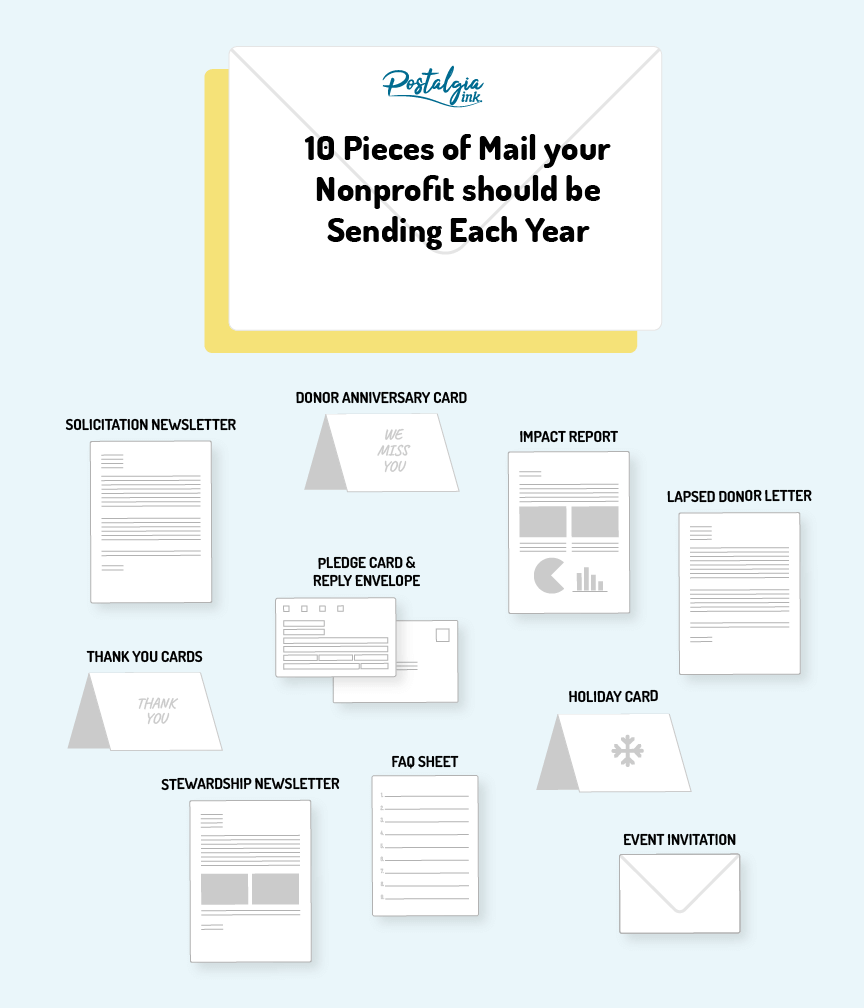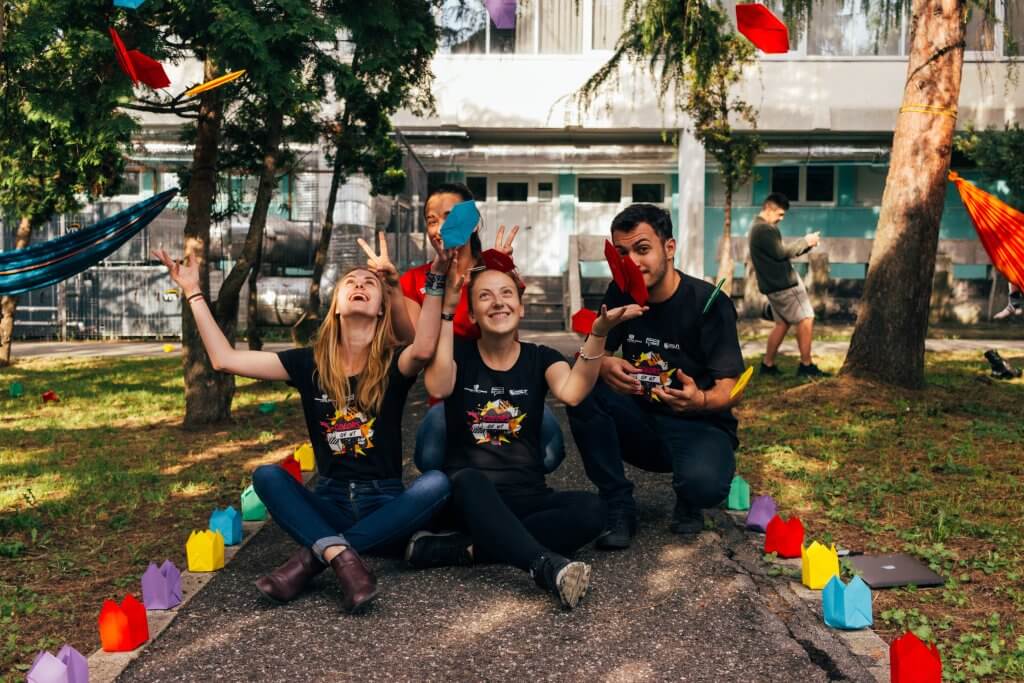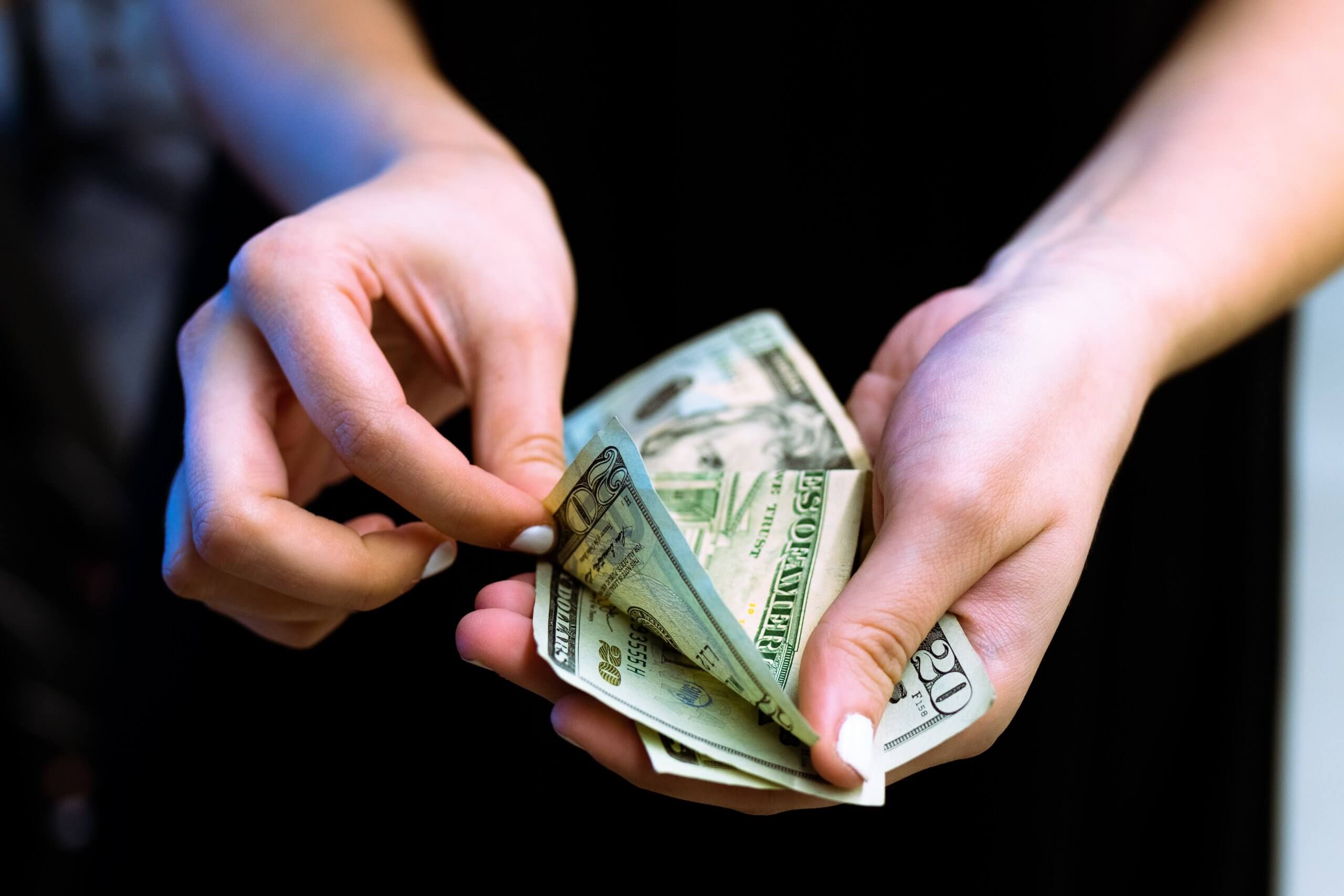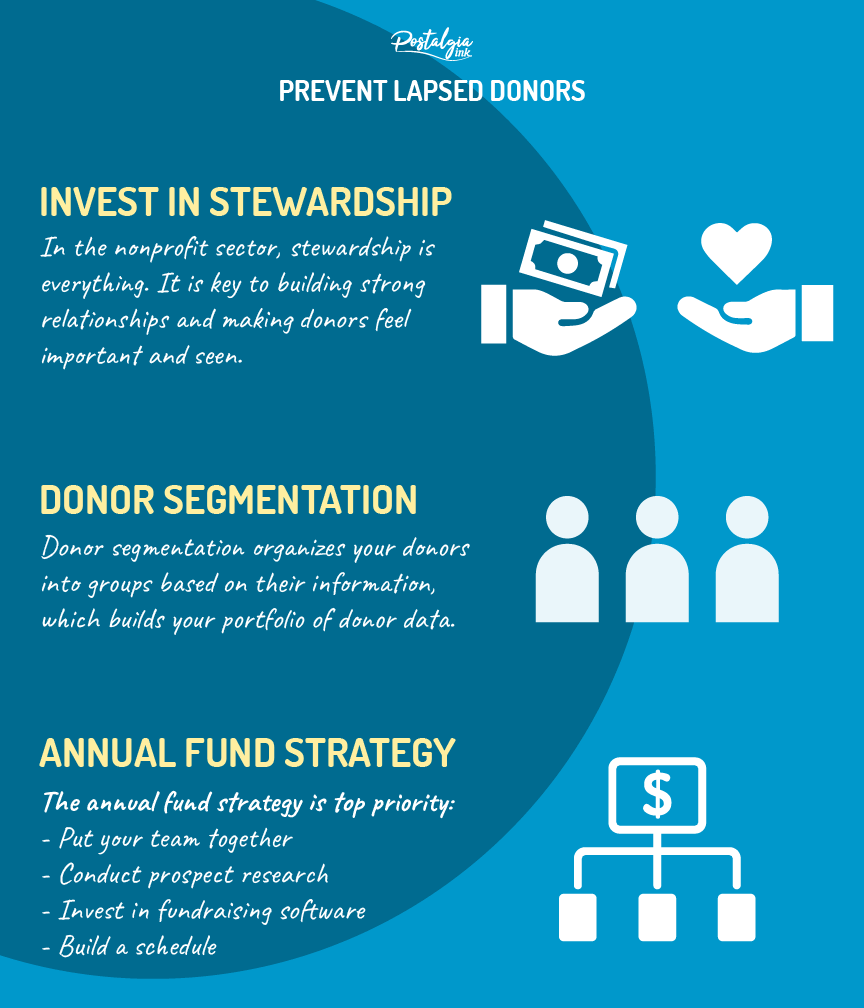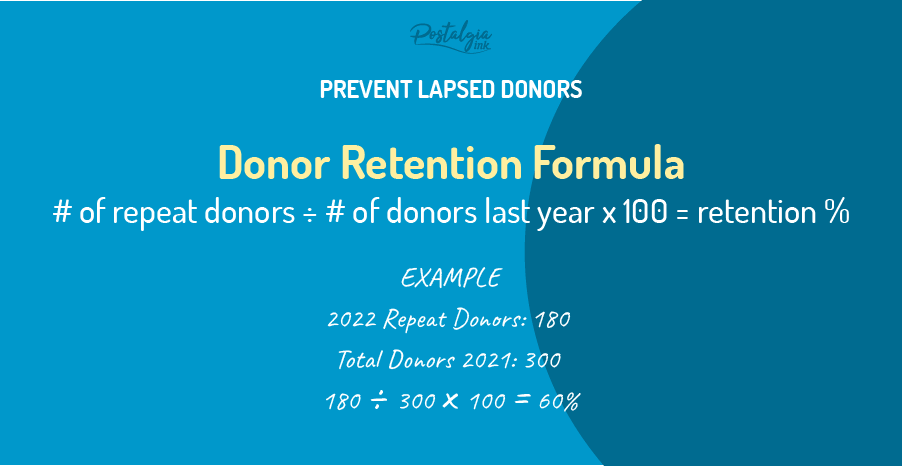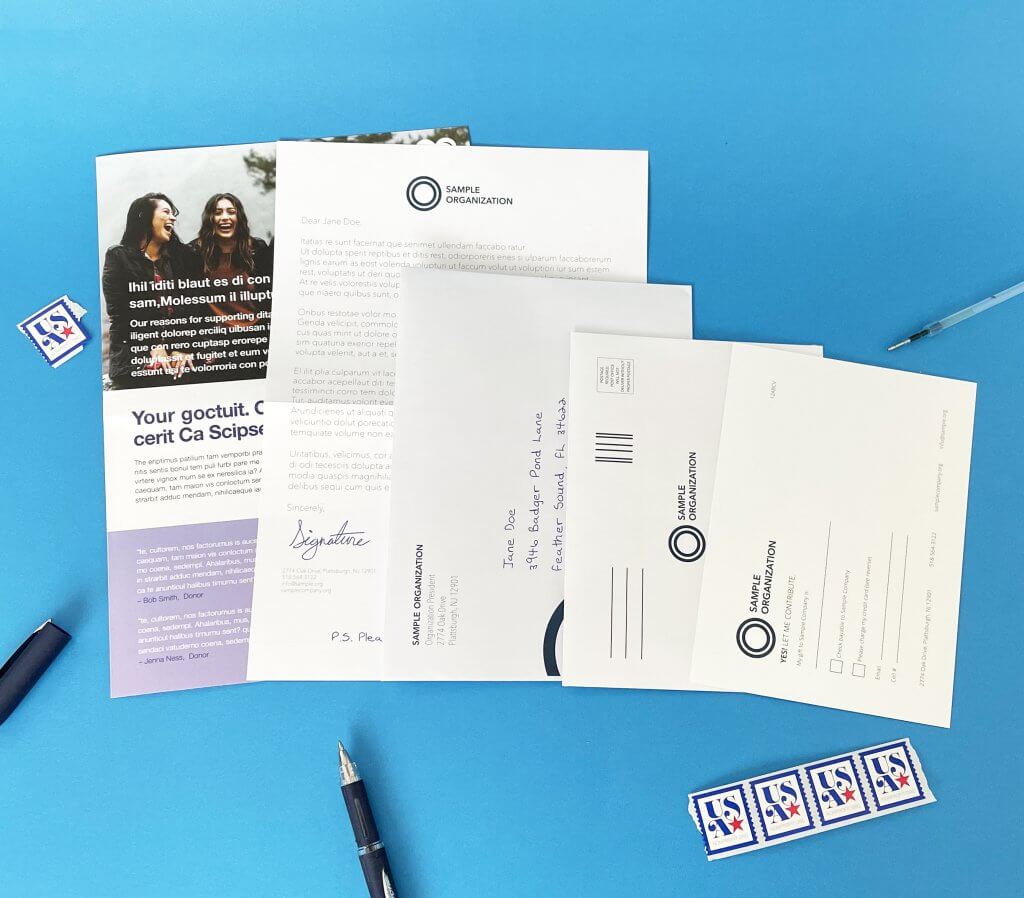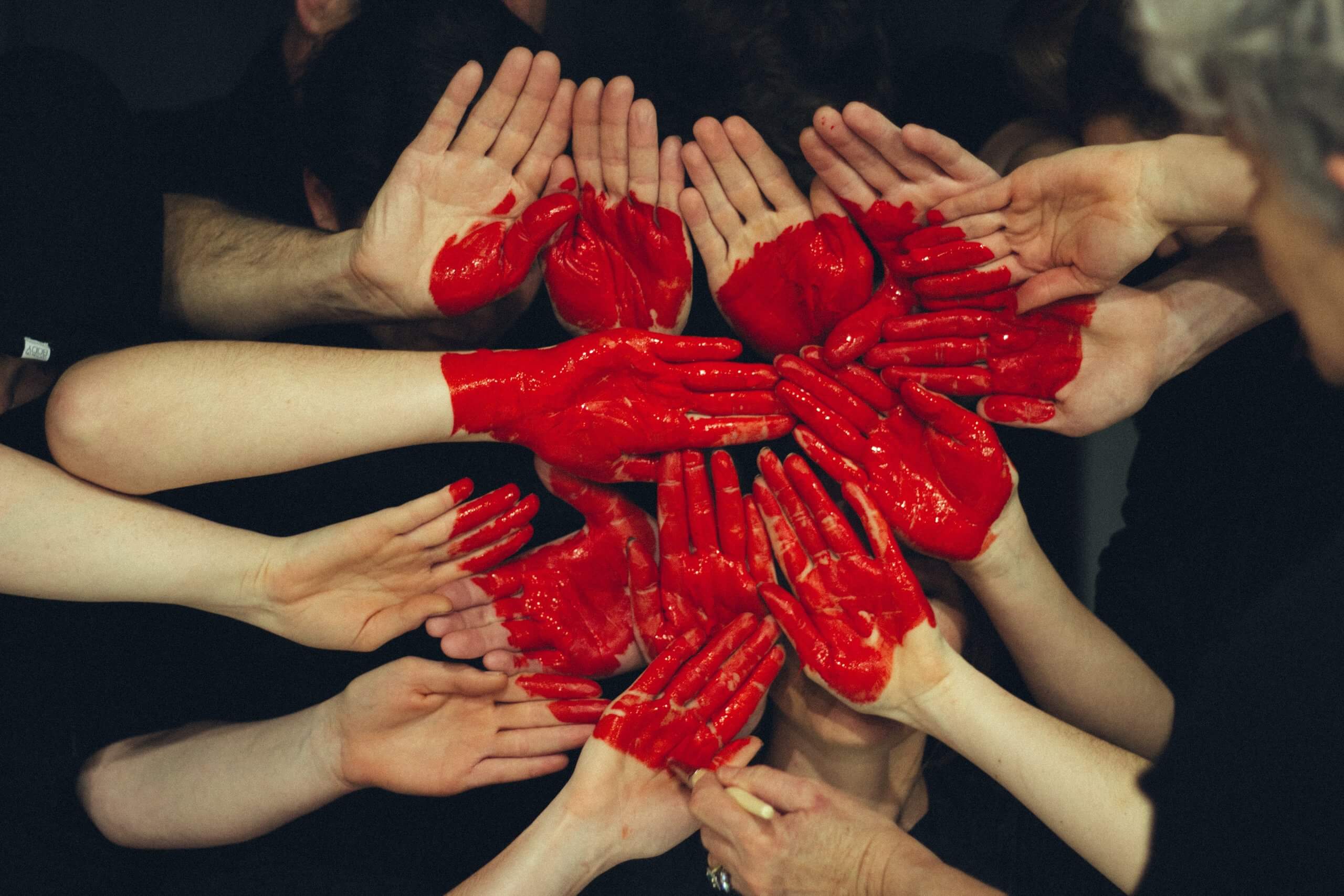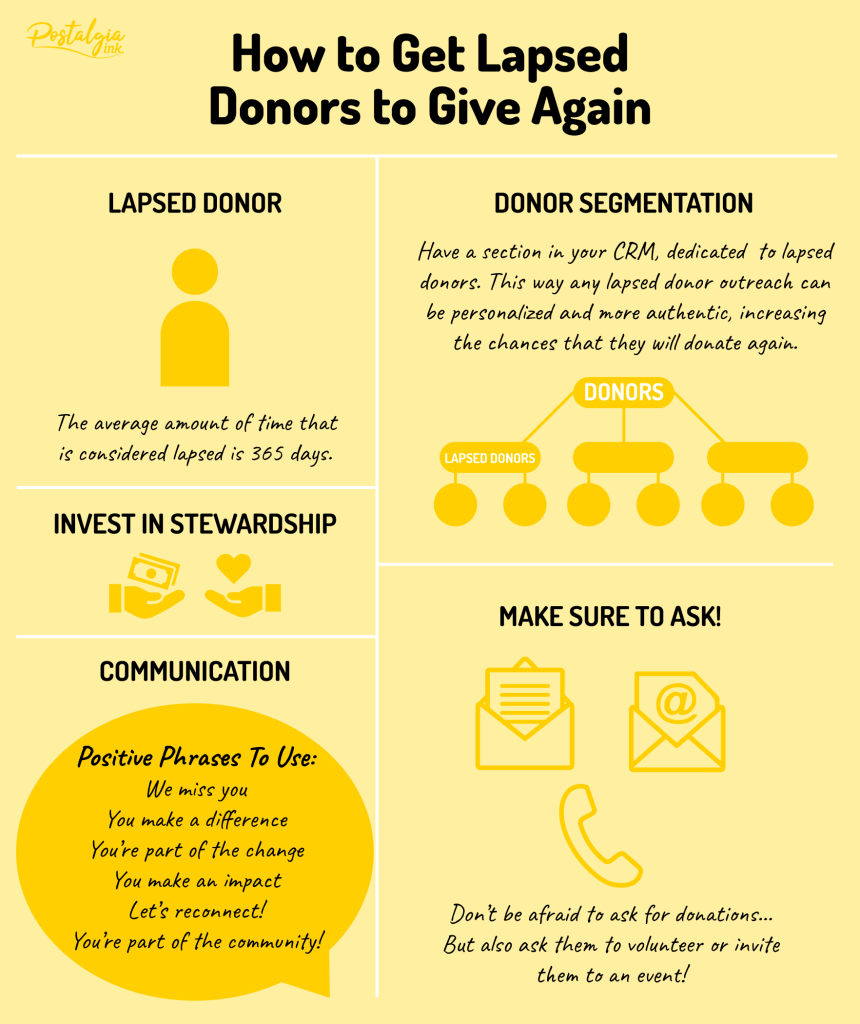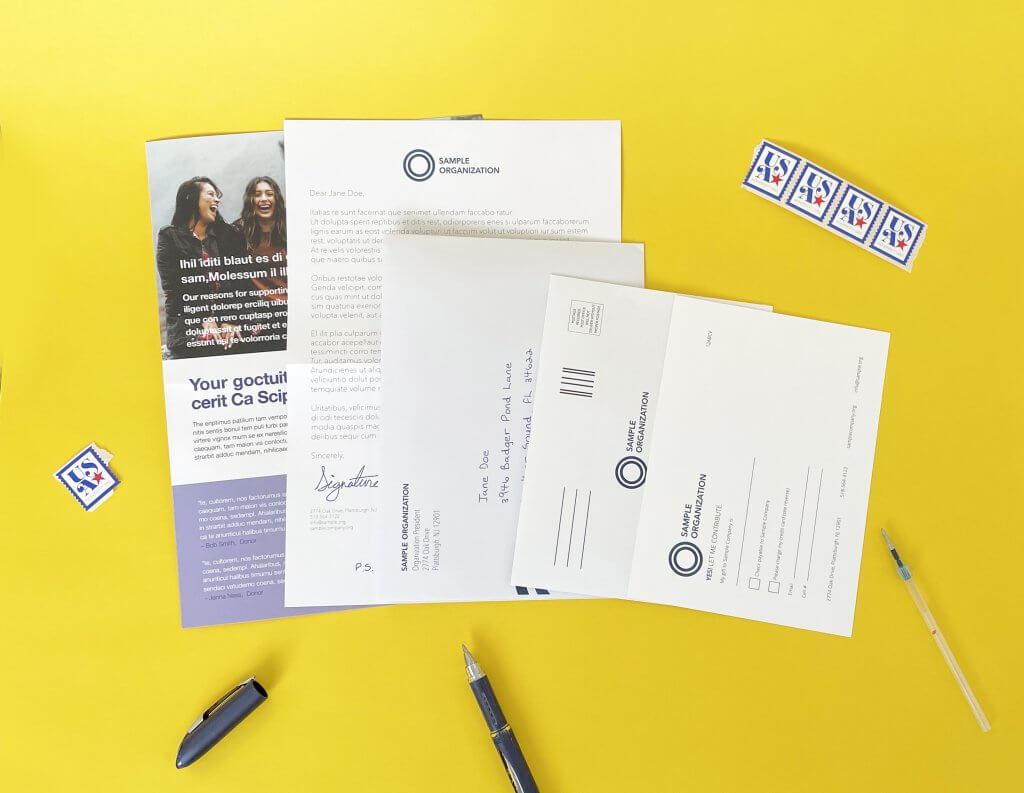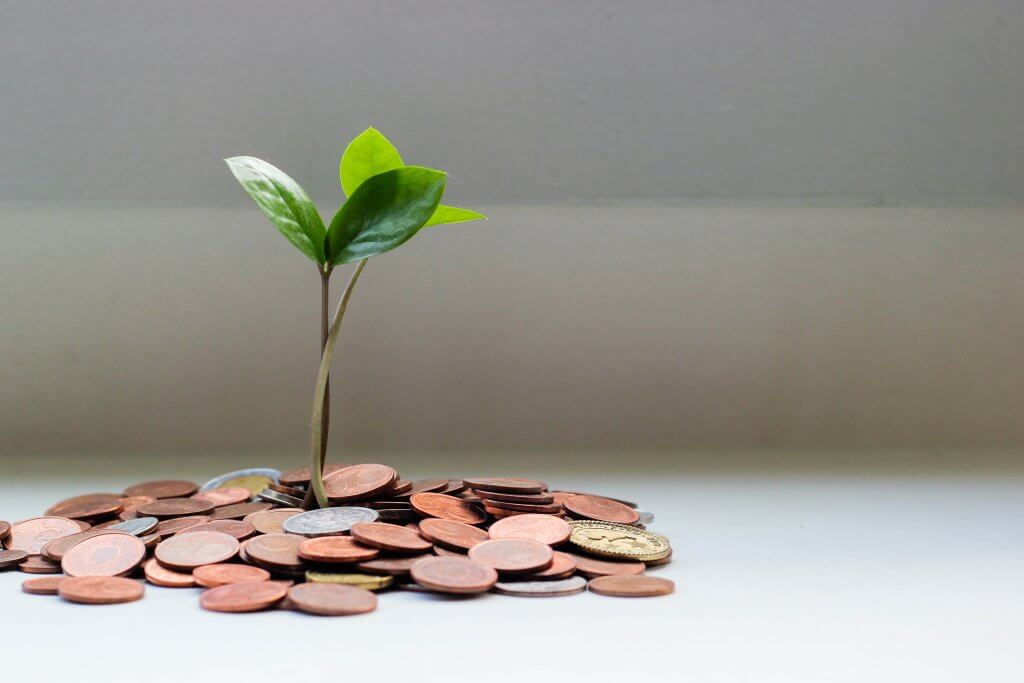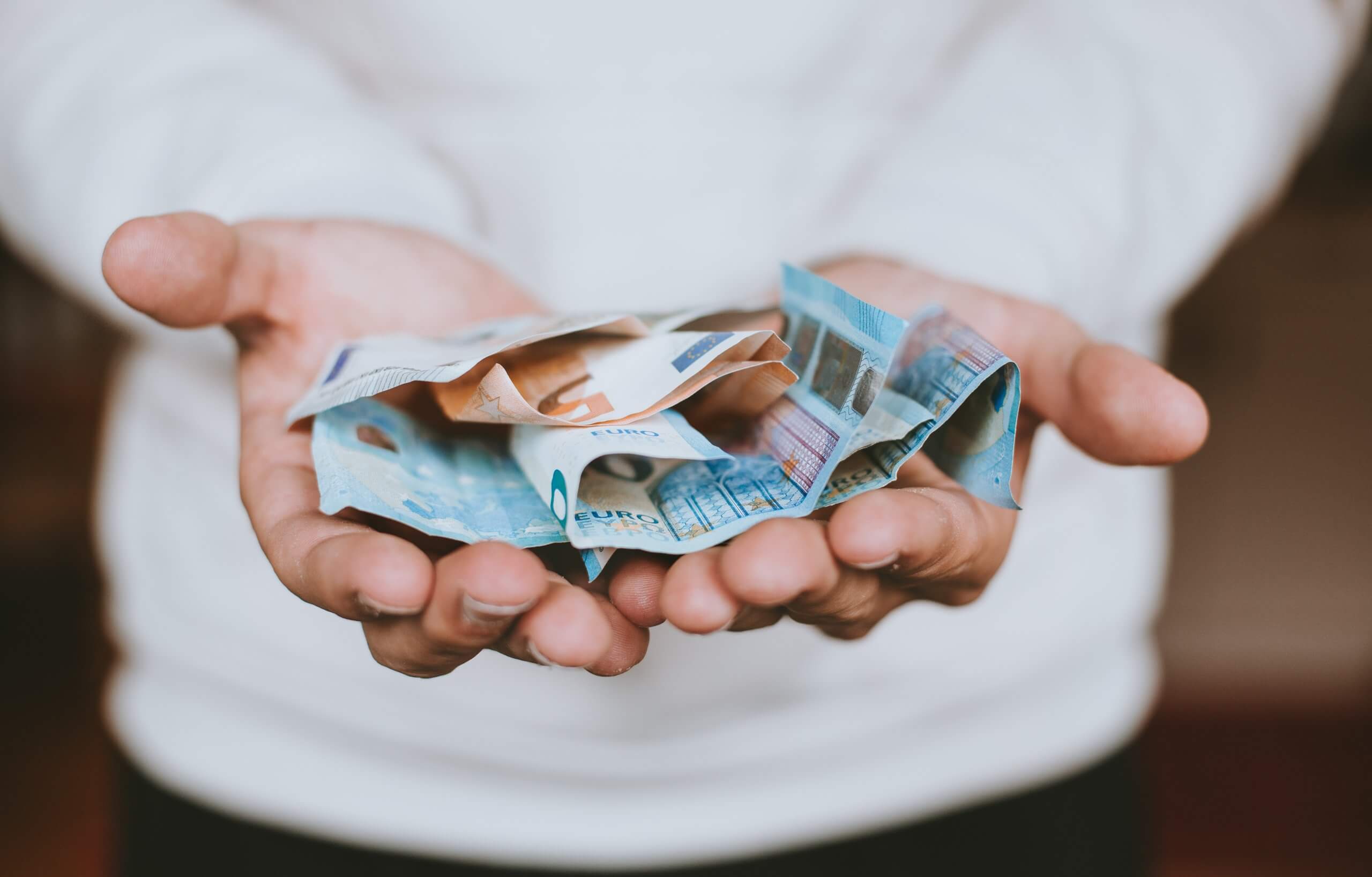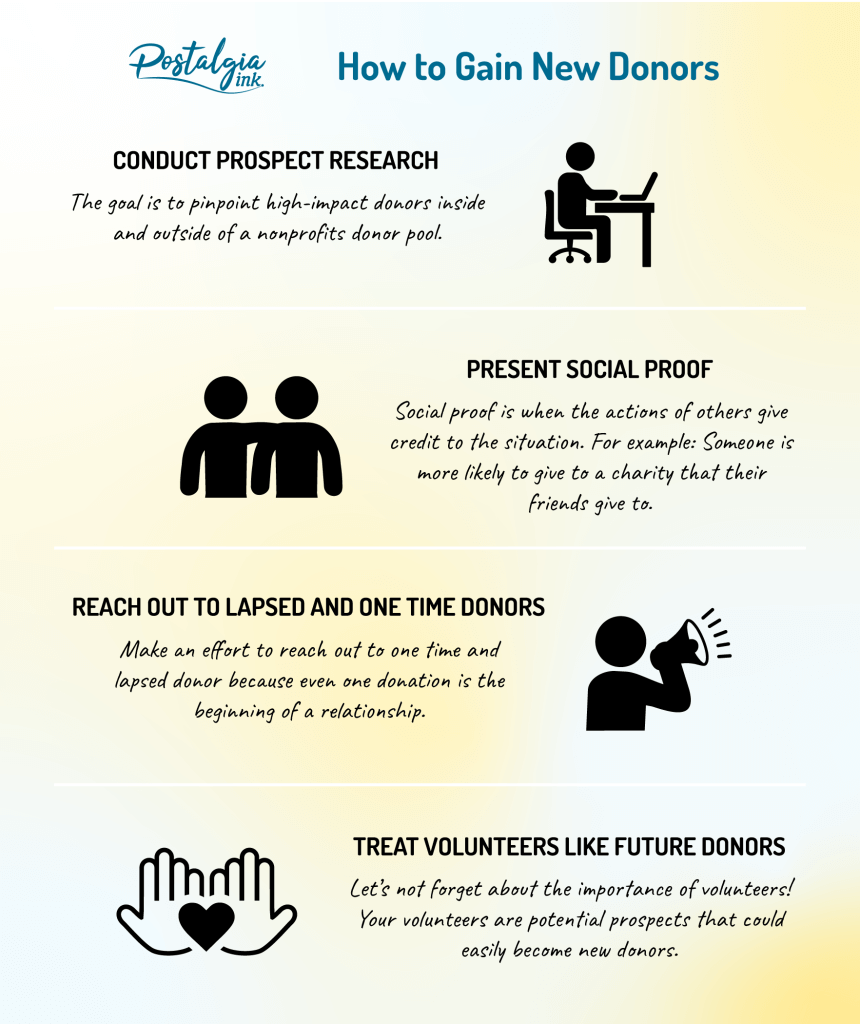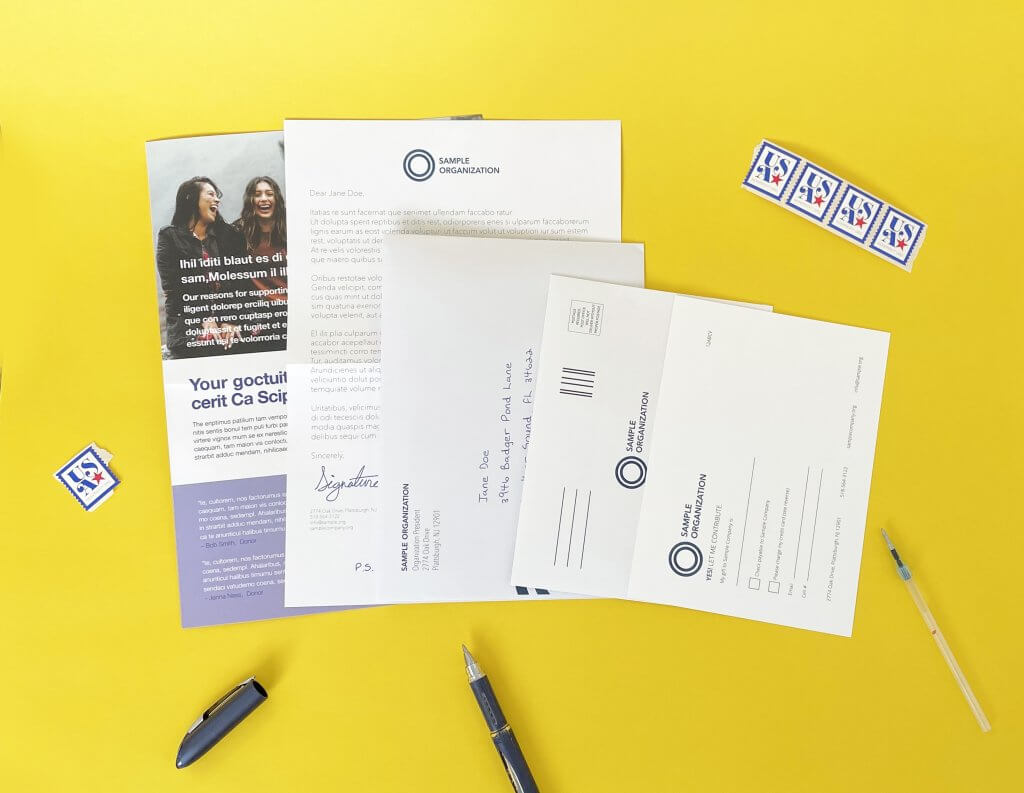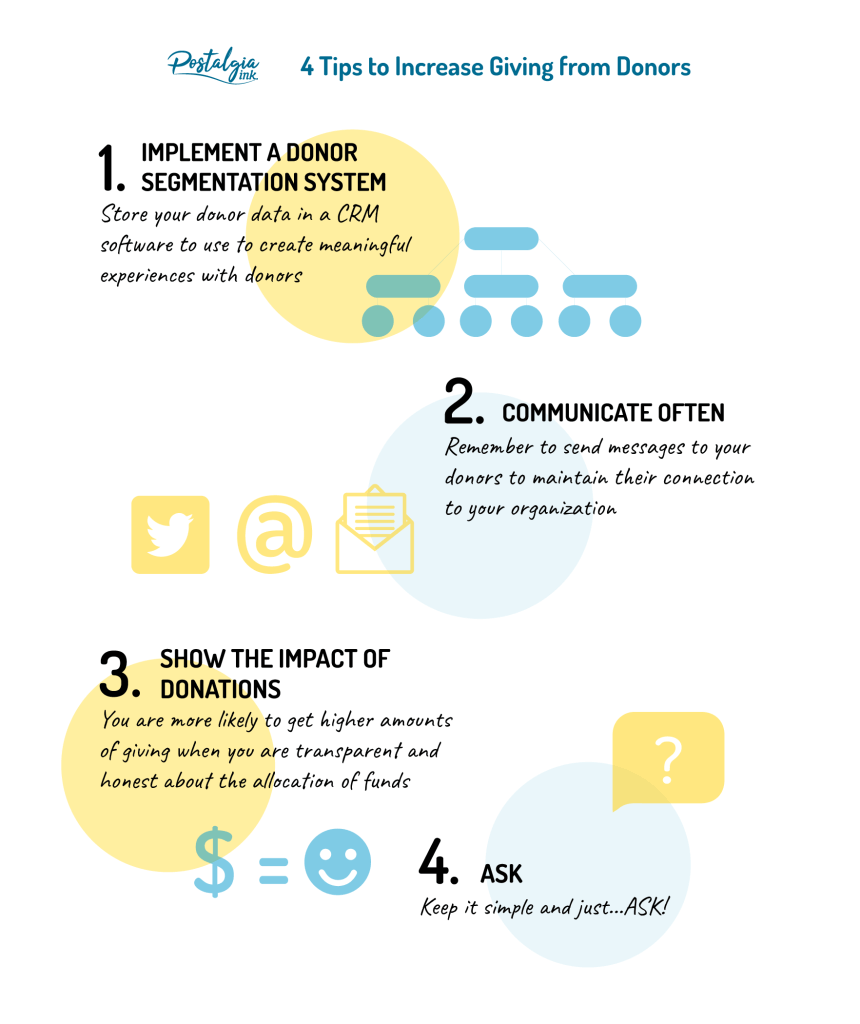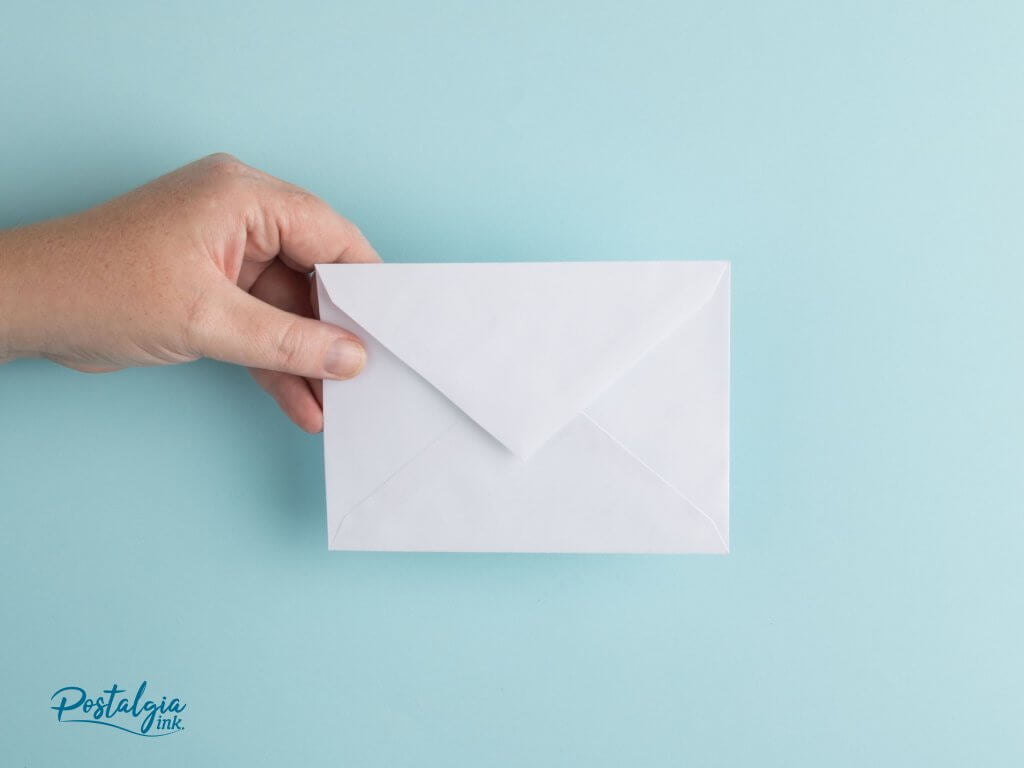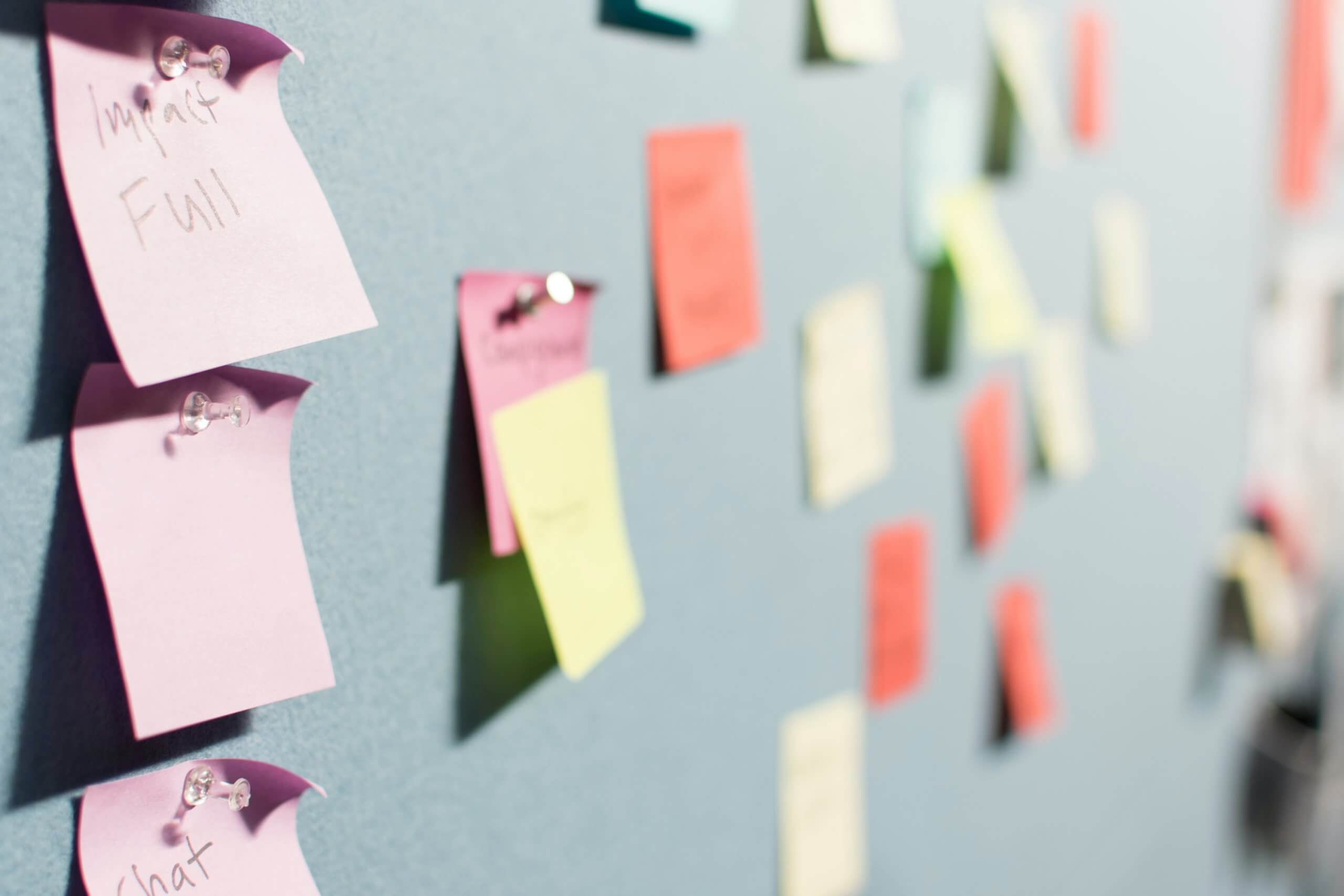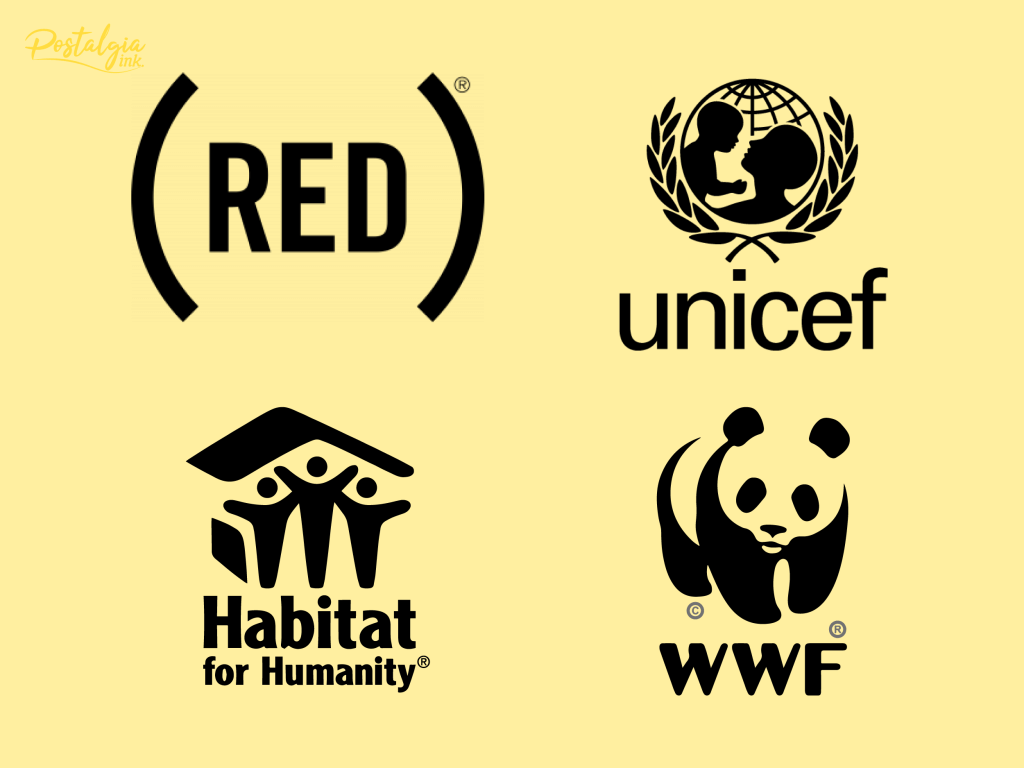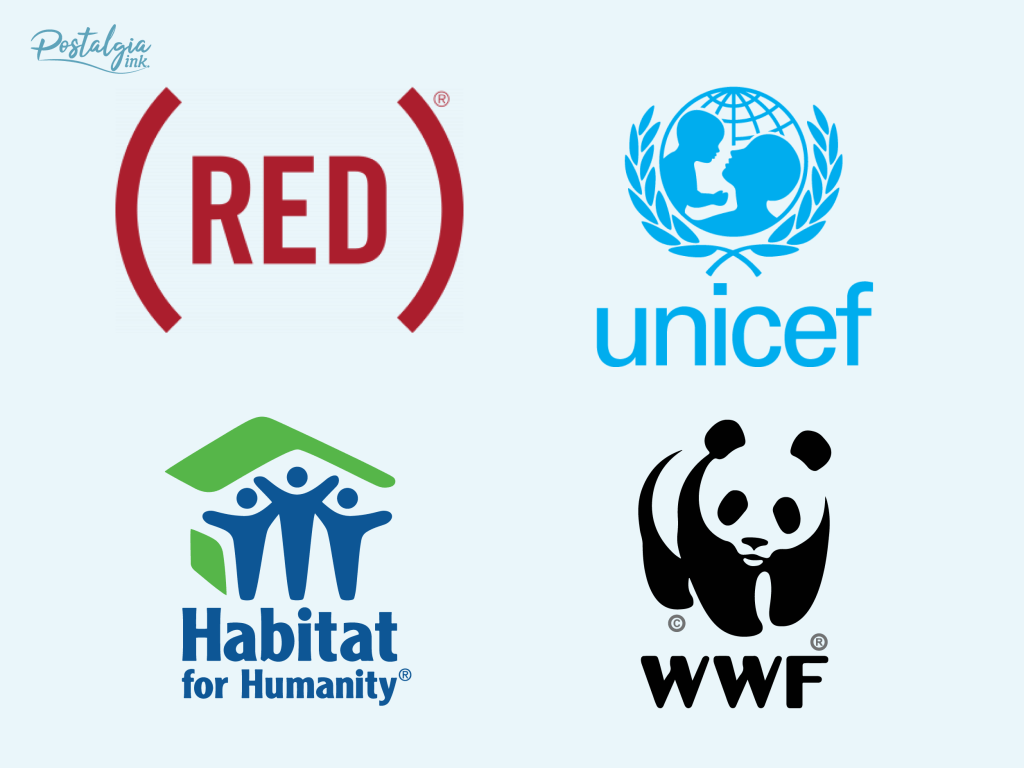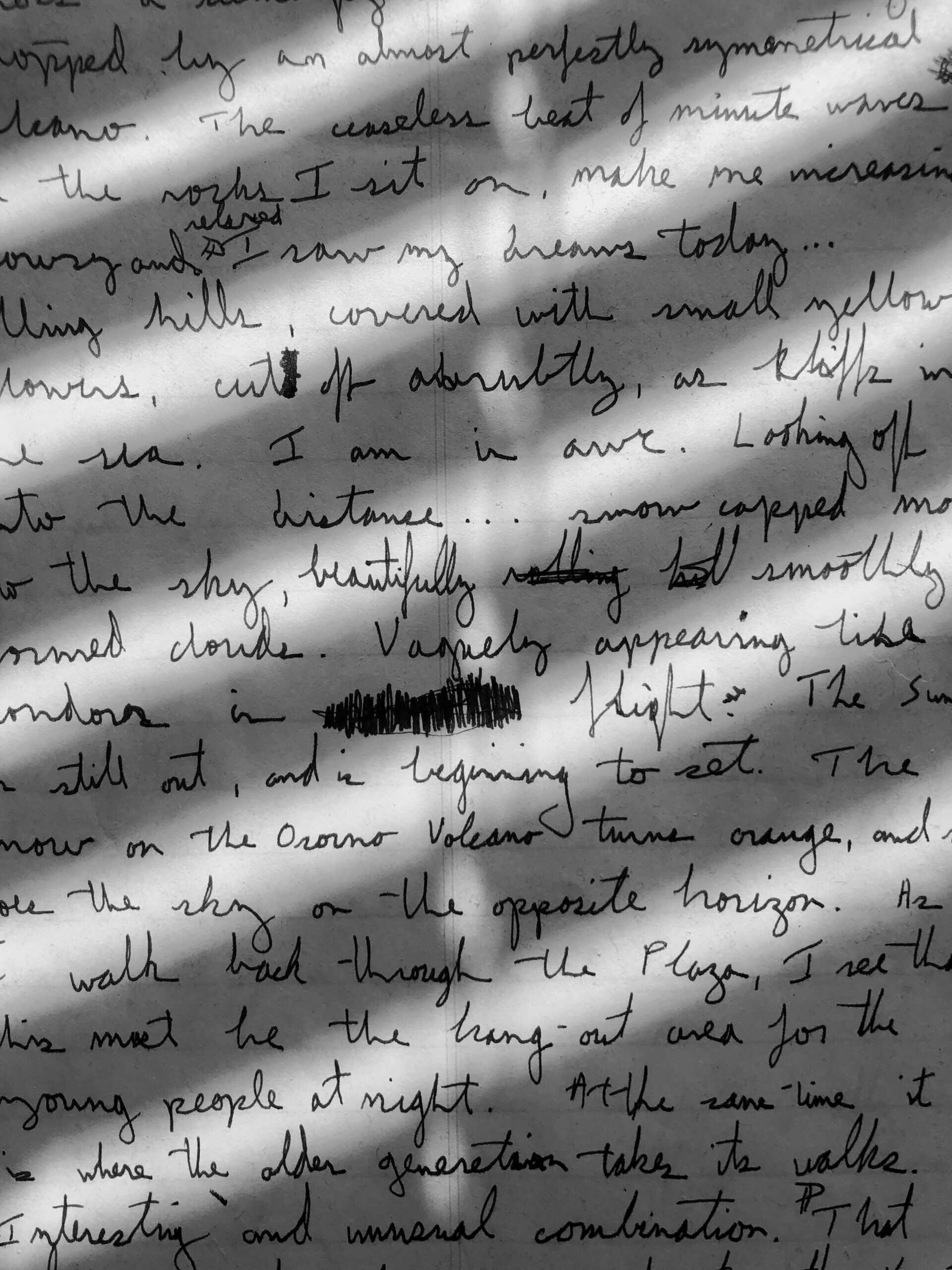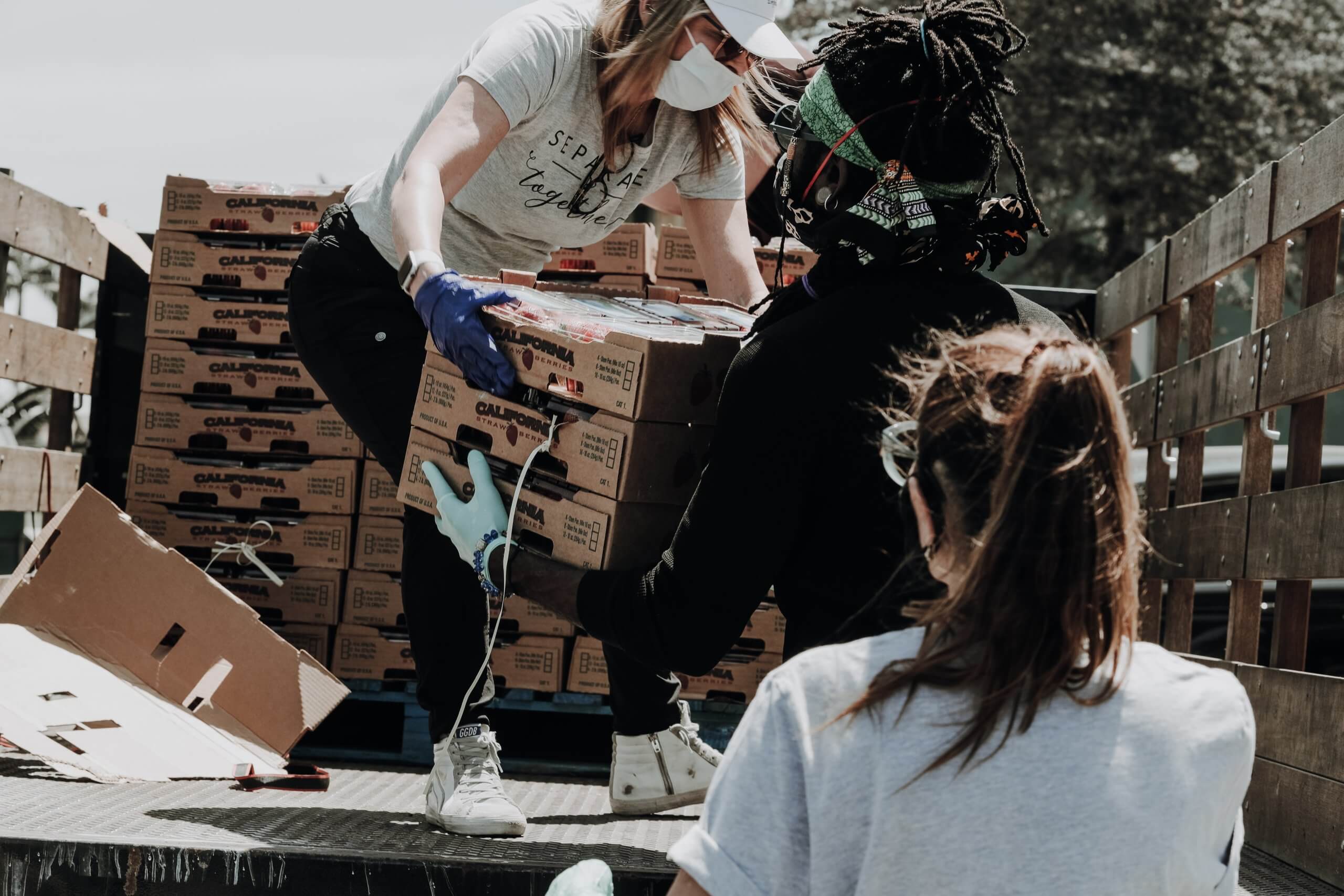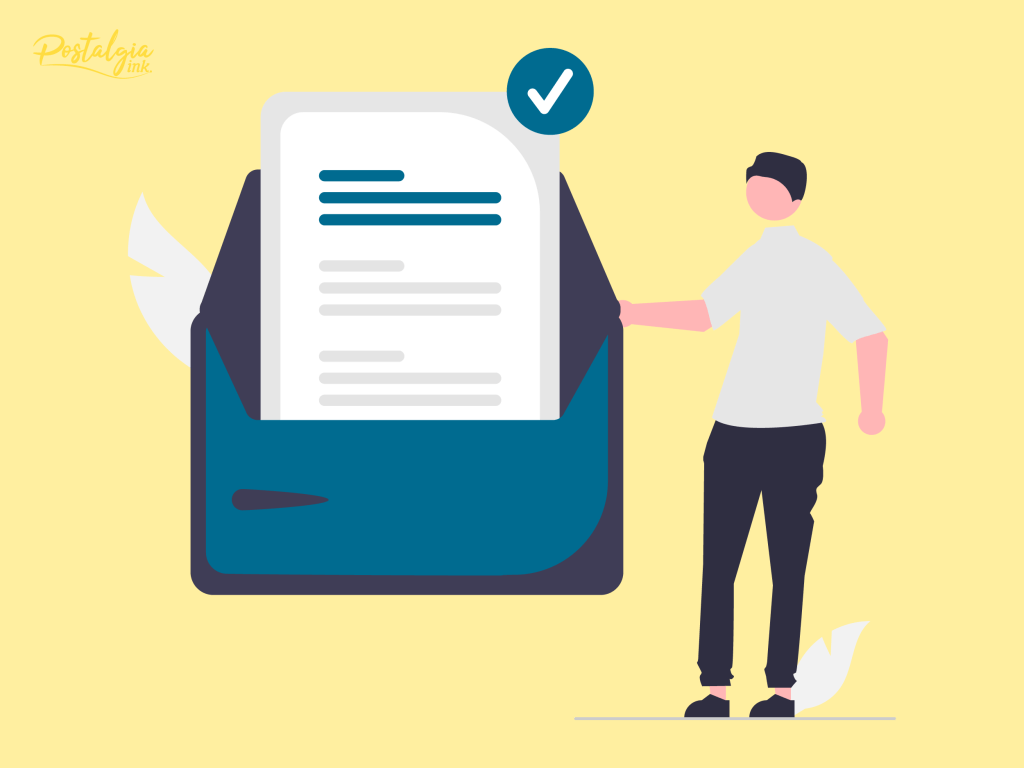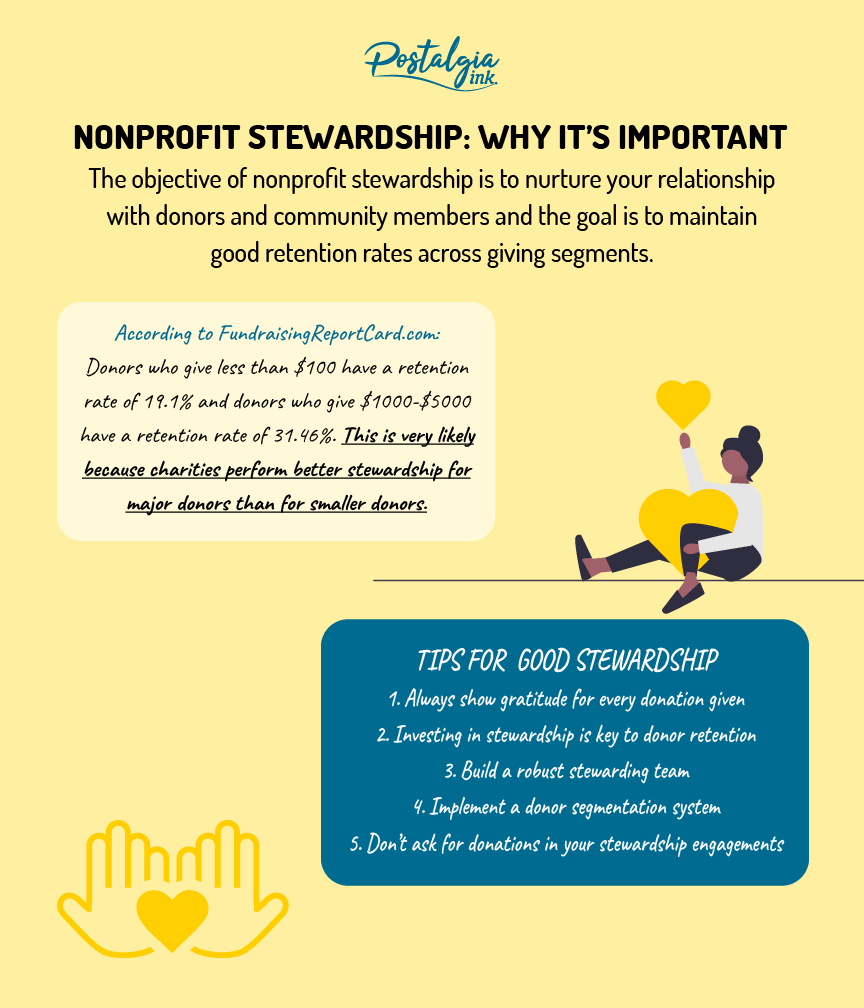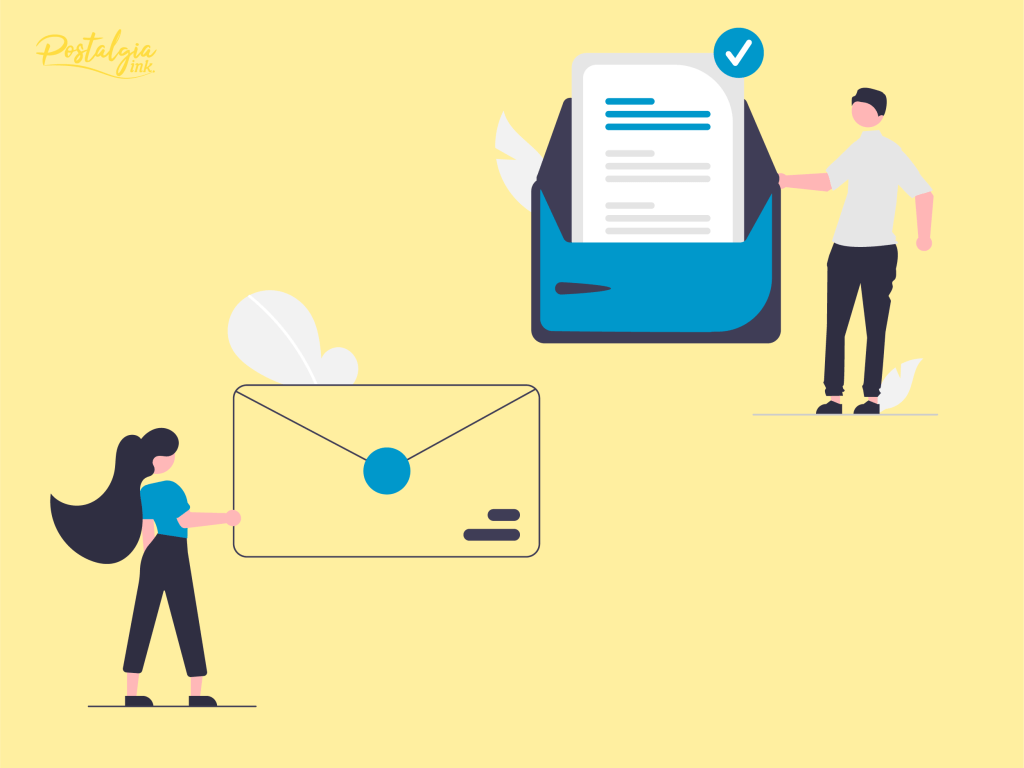INTRODUCTION
When putting together the fundraising and stewardship parts of your nonprofit marketing plan consider these 10 pieces of mail. Direct mail is the guaranteed best way to get your donor’s attention. Our clients have seen these pieces increase fundraising and retention rates! A significant feature of our handwritten direct mail is its customizability, allowing personalized authentic communication with members of your community.
According to Nonprofitpro.com, email response rates are extremely low. So low that they don’t even reach 1%. On average the email response rate is 0.1%, online display marketing is 0.2%, and paid search is 0.6%. Direct mail has a higher response rate average of 5.3%, while handwritten direct mail campaigns push that response rate even higher. The overall direct mail impact can be even higher than the response rates imply, as direct mail can also increase online giving.
The 10 Direct Mail Pieces
1. Solicitation Newsletter
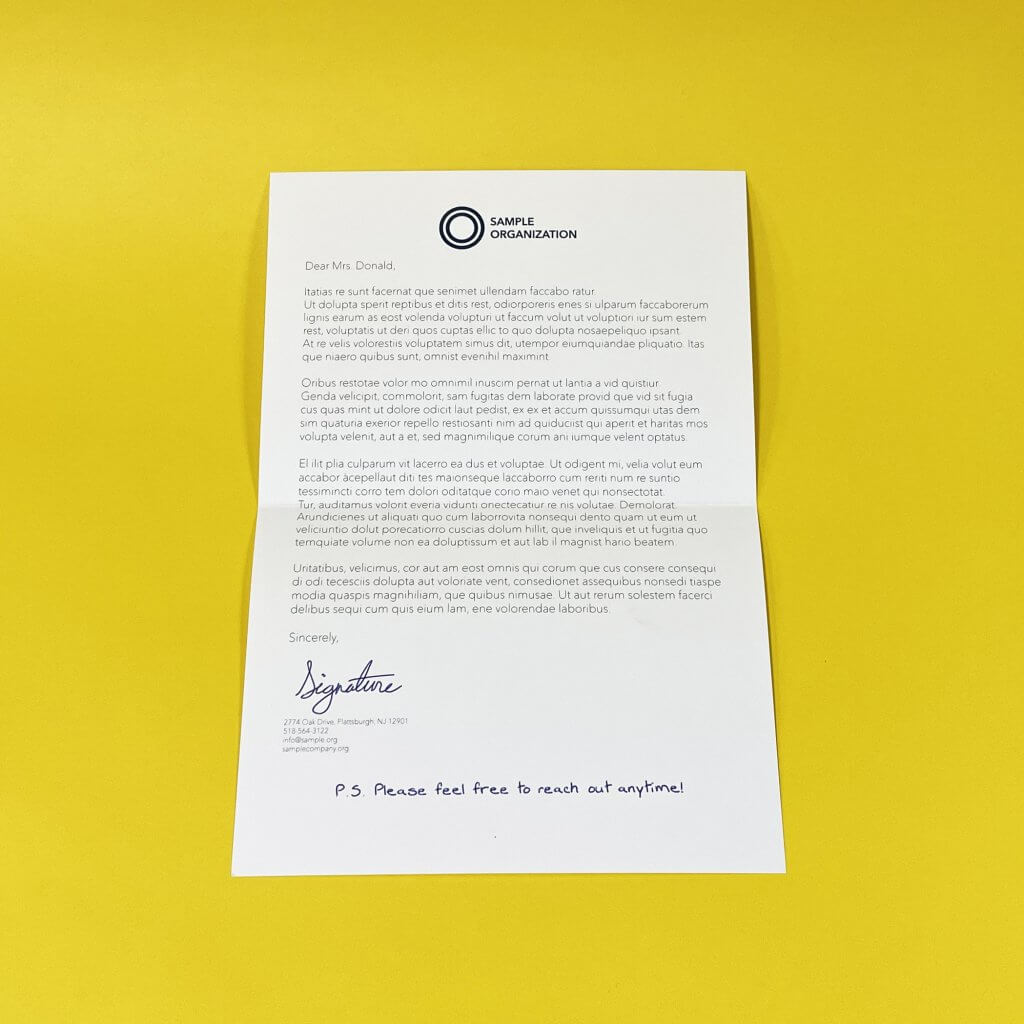
The solicitation letter requests donations, contributions, or volunteers from the recipient. This letter is properly addressed to the addressee, clearly states who or which organization it is from, then goes into detail about the purpose of this solicitation and how the recipient can take action. This letter acts as a vehicle to describe the “ask” , such as the upcoming fundraising event. The fundraising event details that should be mentioned are, the name of the event, the purpose, who is sponsoring the event, the date, the venue, and any other important details. Always ensure to include details on how the recipient can be a part of the event or ways to donate to the cause.
Here is a solicitation newsletter format:
- Organization name and address
- Date
- Name and address of recipient
- Salutation (Dear Salutation, )
- First paragraph: introduce your organization and summarize your mission
- Second Paragraph: state the details of the fundraising event
- Third paragraph: request an ask in the form of: attendance to event, donation, volunteers
- Fourth paragraph: Let them know you are open to being contacted and include contact information
- Fifth paragraph: Express gratitude in advance
- Complimentary close (Warm Regards,)
- Handwritten signature above your name
- PS. message (optional, but encouraged)
2. Event Invitation
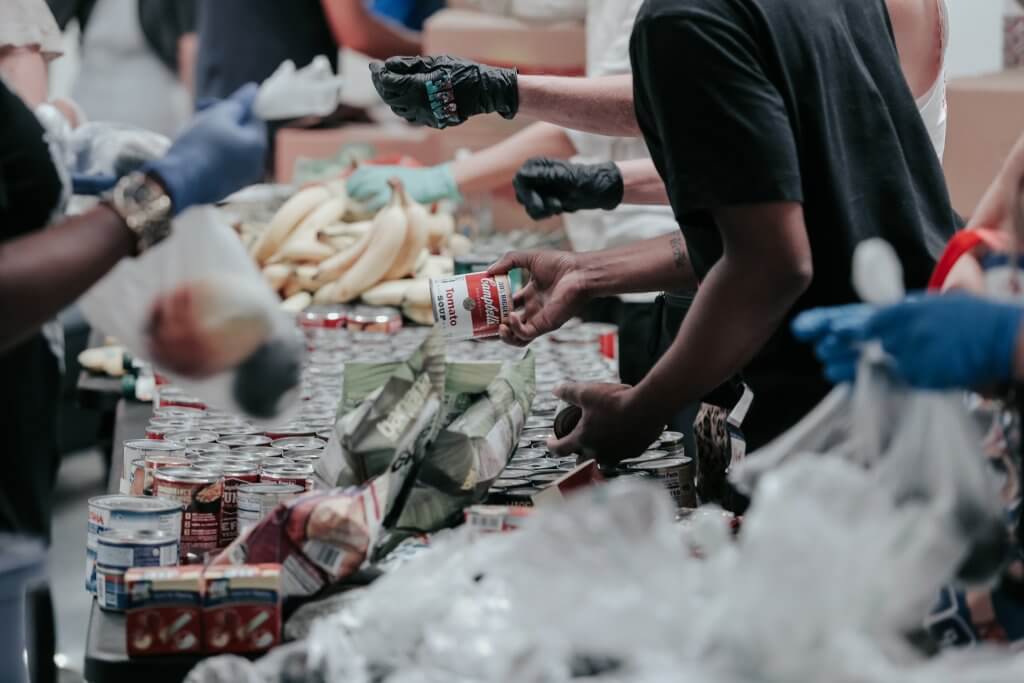
An event invitation can be paired with your solicitation letter if the contents of the letter talks about an upcoming event. Take care to have an eye catching design that is easy to read and accessible (Clear Print Accessibility Guide).
What to include in your invitation:
- Name of event
- Date and time
- Location
- RSVP details
- Your organization’s name
- Any sponsors
- Key event details
- Any other important information
- Contact information
3. Stewardship Newsletter
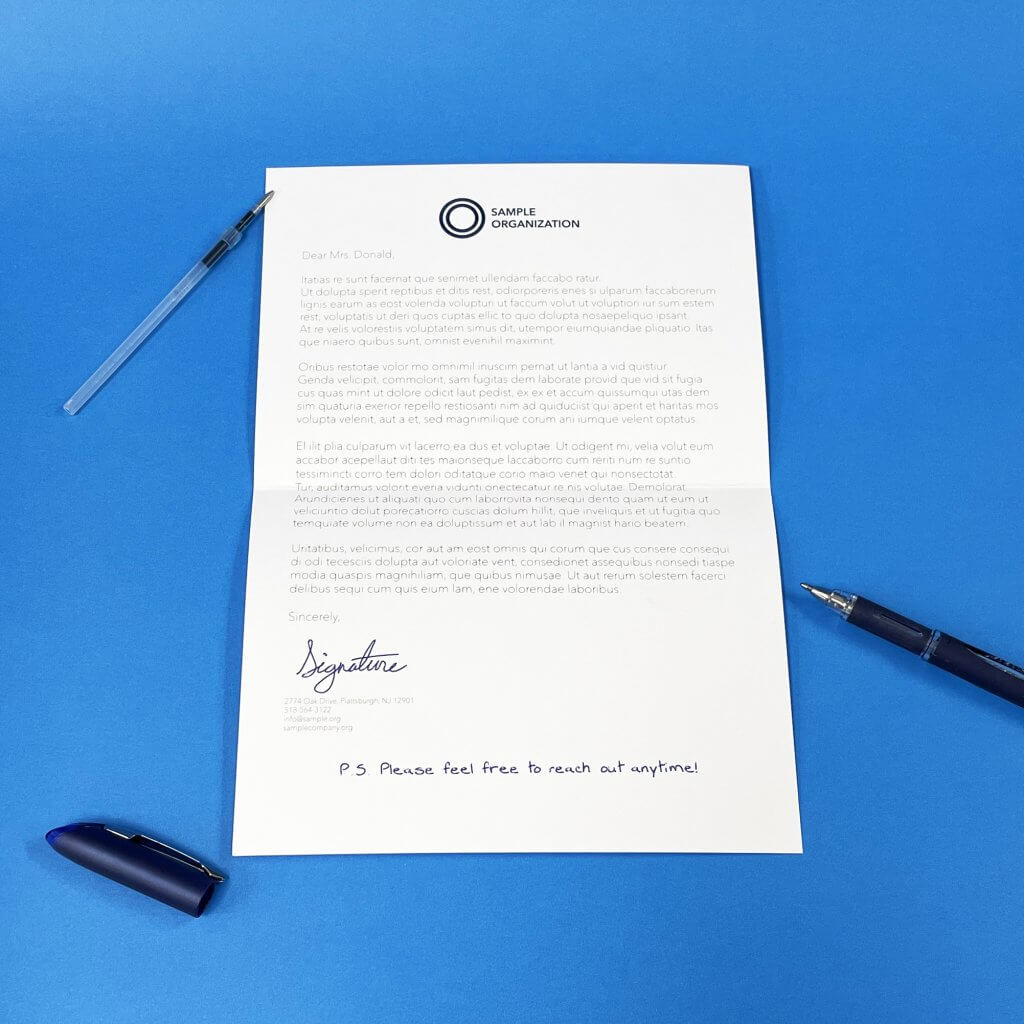
Stewardship is about building the relationship you have with donors and maintaining open communication. You would send a stewardship letter to them after they have donated, to keep them informed about how their gift is being used. By being transparent about the allocation of funds, it allows donors to feel more involved and connected to your organization. Your goal is to provide them with reassurance that their gift is making an impact and meets their expectations and intentions.
Here is a stewardship newsletter format:
- Organization name and address
- Date
- Name and address of recipient
- Salutation (Dear Salutation, )
- First paragraph: Mention how you have received their gift, the gift amount, express organization’s gratitude
- Second paragraph: Quick summary of mission statement, explain how funds will/have been used
- Third paragraph: Authentic statement of gratitude (1-2 sentences)
- Fourth paragraph: Let them know you are open to being contacted and include contact information
- Complimentary close (Thank You,)
- Handwritten signature above your name
- PS. message (optional, but encouraged)
*Important Tip: Never ask for donations in your stewardship endeavours.
4. Holiday Cards
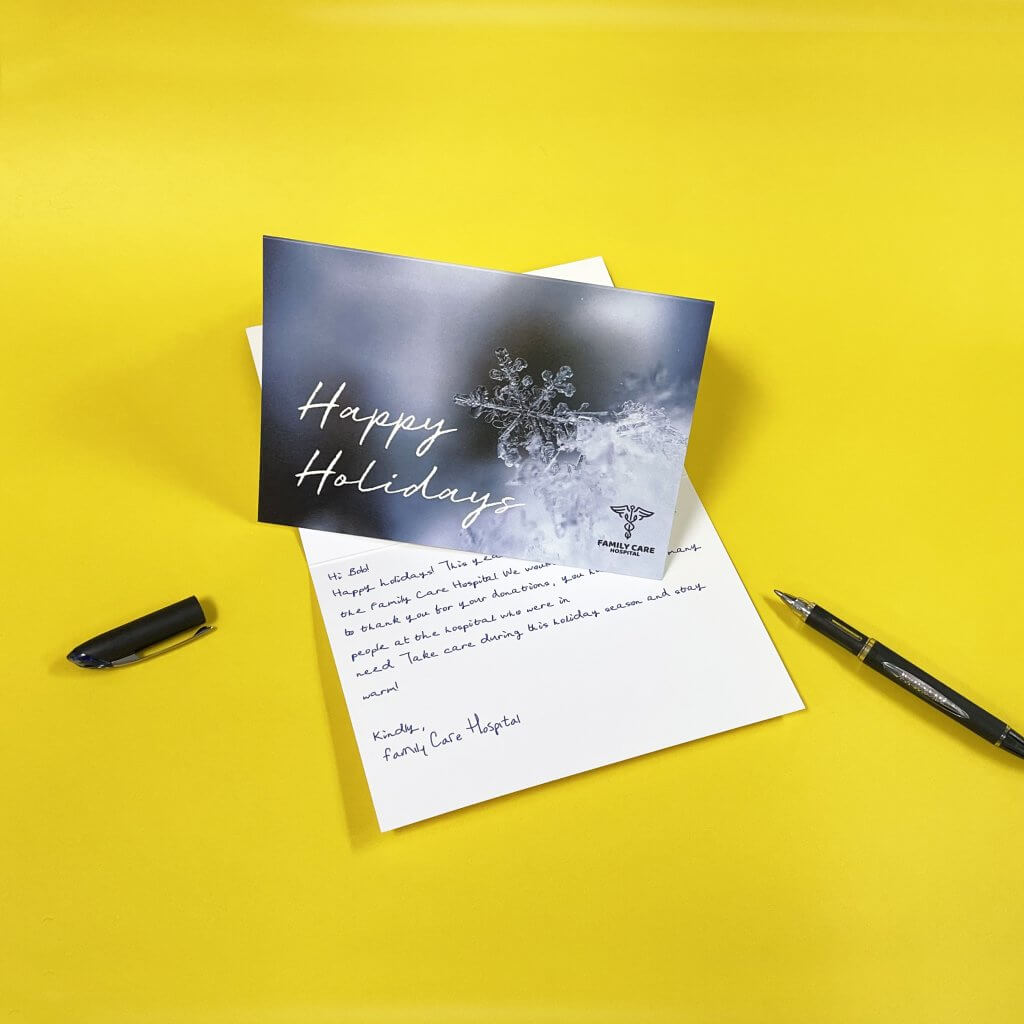
Holiday cards are at the top of the list of most important pieces of mail to send out each year. According to nonprofitssource.com, their 2023 charitable giving statistics report, shows that 30% of giving happens in December. So make sure to be on schedule and create beautifully designed cards that your recipients would want to put on display. Add the personal detail of curating handwritten messages. Be clear on how they can give, whether that be via digital platforms or filling out a pledge card.
5. Impact Report
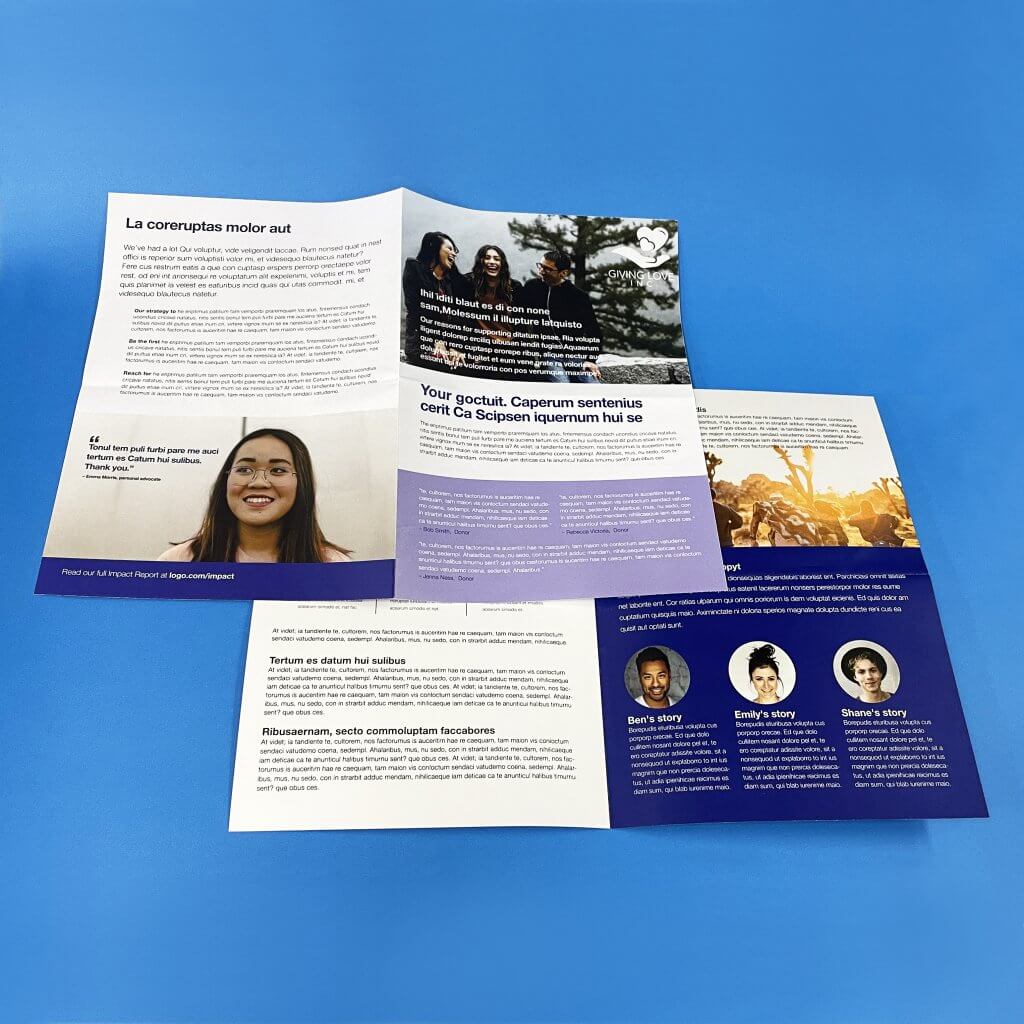
The purpose of impact reports (also known as annual reports), are to communicate the progress made helping the people your organization is supporting. According to a case study by Katie Boswell and Sarah Handley from thinknpc.org, there are 5 areas you should include in your impact report: need, activities, outcomes, evidence, and lessons learnt.
Need: What are the problems your organization is trying to make an impact on?
Activities: How is your organization addressing these problems?
Outcomes: What progress have these activities made on the problems?
Evidence: What evidence do you have to show you have made an impact?
Lessons learned: How/what can you improve in the future?
Impact reports can take many forms from a folded booklet to a one page piece. To ensure your recipients are reading the report, make sure you are designing it in a way that catches their attention.
Here are some tips for the design:
- Be consistent with your organizations brand guidelines
- Write your report with intention
- Make sure the typography is accessible (Clear Print Accessibility Guide)
- Include eye catching imagery
- Include a contact information sections
- Include a way to donate section
6. Thank you Cards
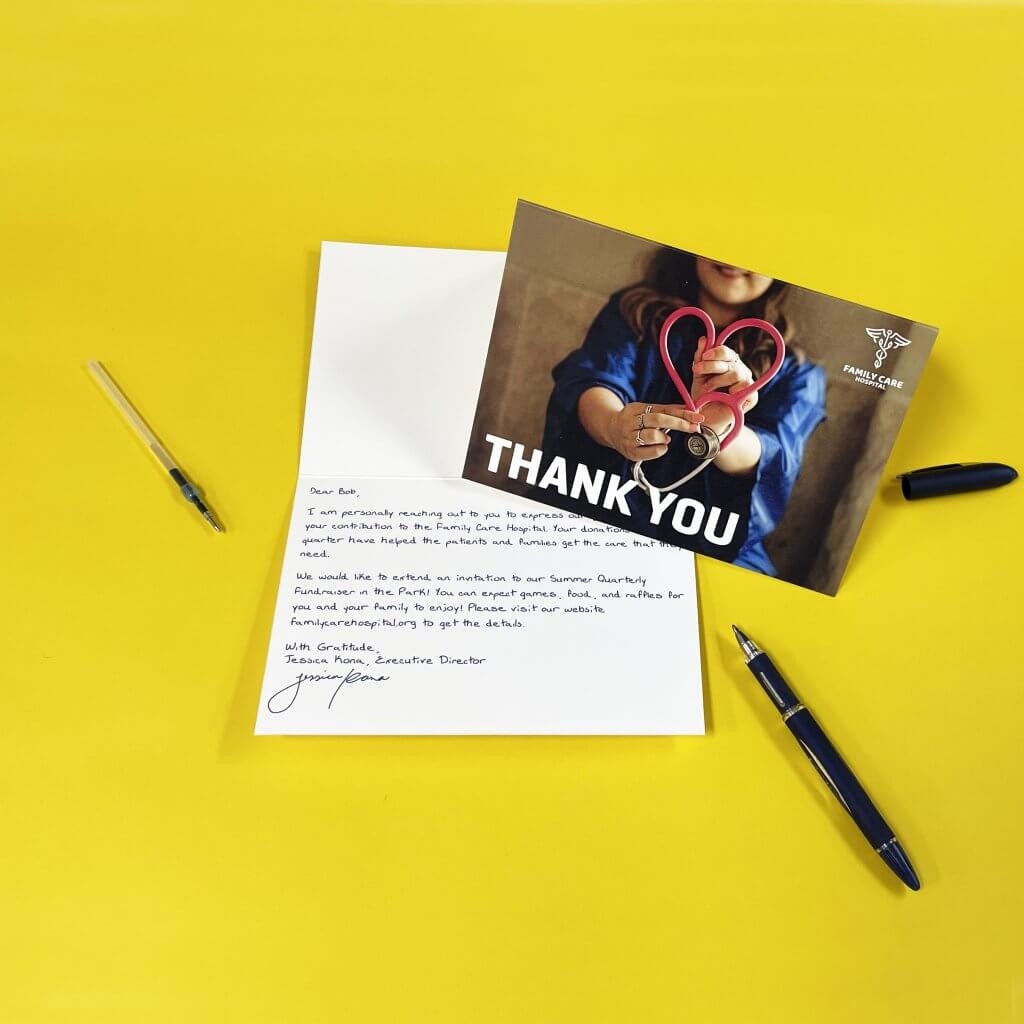
Thank you cards are an essential part of good stewardship practices. The bottom line is, when you receive a donation, a thank you message should be sent back. Some helpful tips to consider when writing a thank you card, personalized thank you message, no donation ask, appealing design, make it handwritten, include a signature, and contact information. The structure of a thank you card is similar to a thank you letter, the difference is this one is condensed.
Here is a thank you card format:
- Salutation (Dear Salutation, )
- First paragraph: Acknowledge how you have received their gift, the gift amount, express organization’s gratitude (1-2 sentences)
- Second paragraph: Quick summary of mission statement, explain how funds will/have been used (1-2 sentences)
- Third paragraph: Another authentic statement of gratitude (1 sentence)
- Complimentary close (Warm Regards, )
- Handwritten signature above your name
7. Pledge Card With Reply Envelope
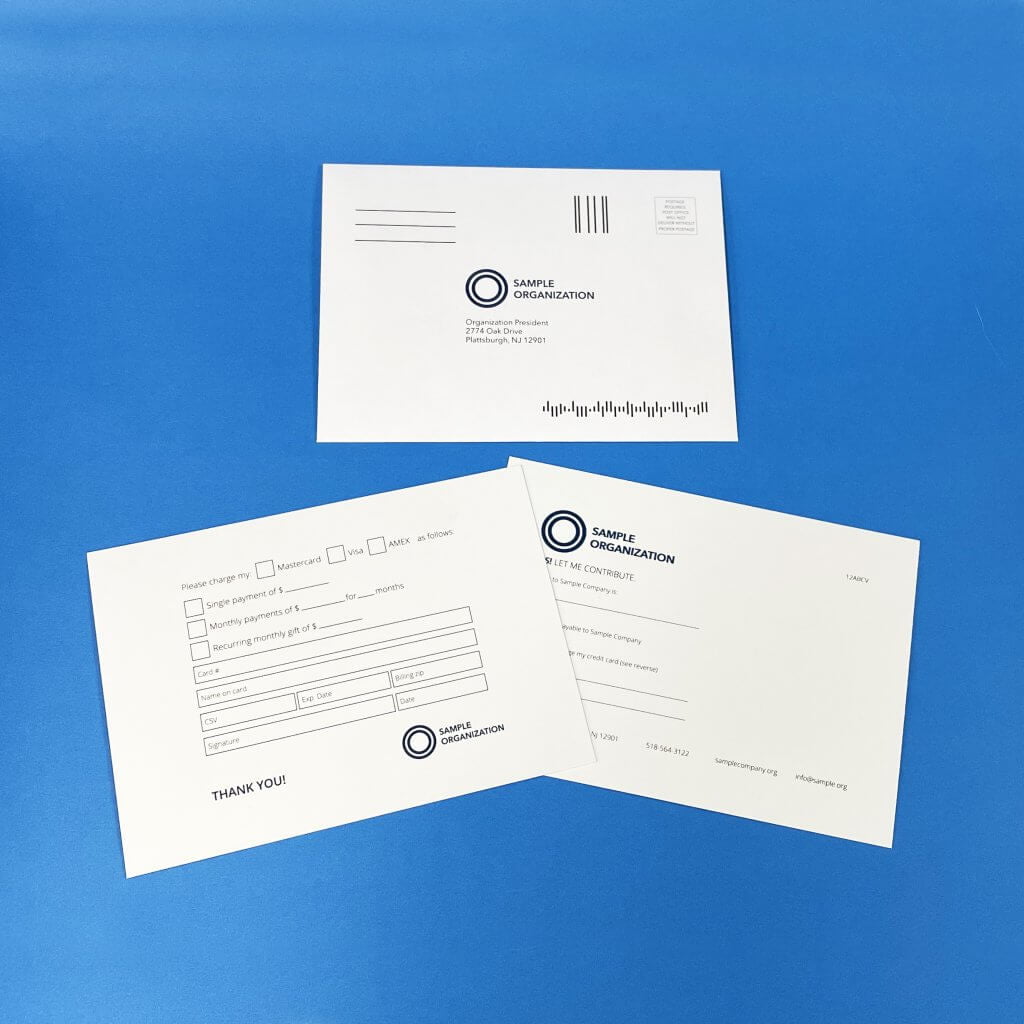
Those who work in the nonprofit sector are no stranger to pledge cards and return/reply envelopes. They are a great way to secure consistent, long-term commitments from donors. Pledge cards are also a great way to collect your donors information for donor segmentation. The standard sections to fill out include: first and last name, email address, phone number, home address, and pledge amounts. It is also a good idea to have a section that summarizes your mission statement and how giving impacts the cause.
8. Lapsed Donor Letter
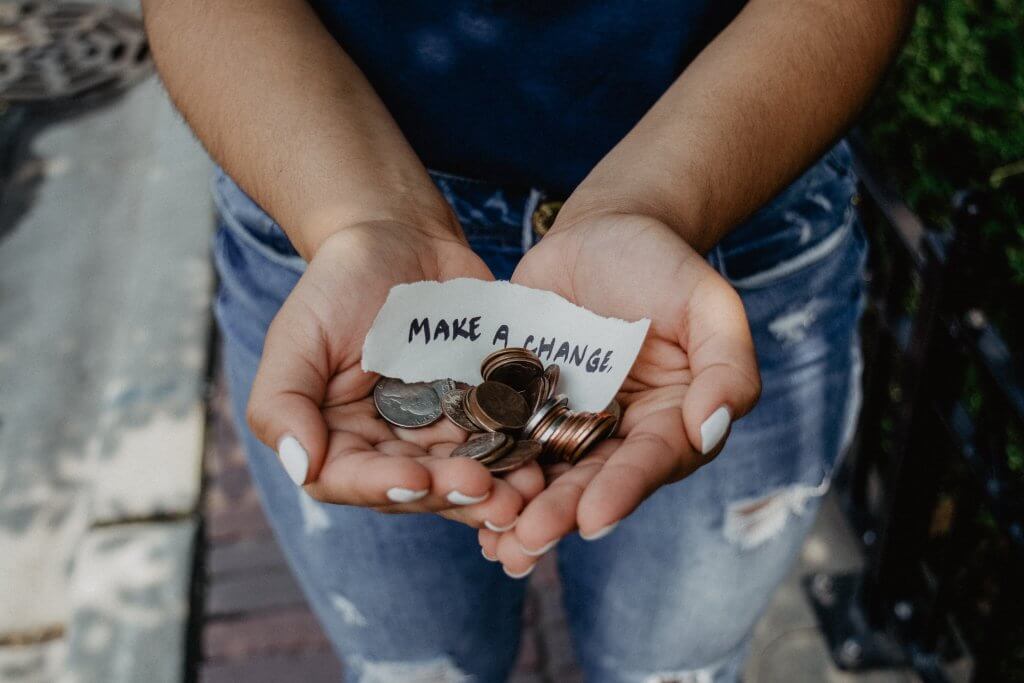
There is the constant struggle to prevent lapsed donors, and sending out personalized lapsed donor letters is good stewardship practice. The type of language you use is important when you communicate with lapsed donors. Remember that inactive donors don’t think of themselves as inactive, they see themselves as having previously donated to the cause. Even if they only donated one time, take the opportunity to highlight that and use encouraging words. Make sure to stay away from language which might make them feel guilty and set a positive tone.
Here is a lapsed donor letter format:
- Organization name and address
- Date
- Name and address of recipient
- Salutation (Dear Salutation, )
- First paragraph: Mention that you consider them part of the community and they have donated in the past, express gratitude
- Second paragraph: Summarize your mission statement and explain that help is still needed
- Third paragraph: Provide ways to donate or participate in the community
- Fourth paragraph: express gratitude again
- Complimentary close (Thank you again, )
- Handwritten signature above your name
- PS. message (optional, but encouraged)
9. Donor Anniversary Card
A donor anniversary card is similar to a lapsed donor letter. It has the same intentions; the difference is that the contents of this card is like a condensed version of the lapsed letter. This option is a less intense way to practice inactive donor stewardship. It also feels more personal, especially if there are personalized details like the message being handwritten.
Here is a donor anniversary card format:
- Salutation (Dear Salutation, )
- First paragraph: Mention that you consider them part of the community and they have donated in the past, express gratitude (1-2 sentences)
- Second paragraph: Quick summary of your mission statement and explain that help is still needed (1-2 sentences)
- Third paragraph: Provide ways to donate (1 sentence)
- Complimentary close (Warm Regards, )
- Handwritten signature above your name
10. End of Year Report
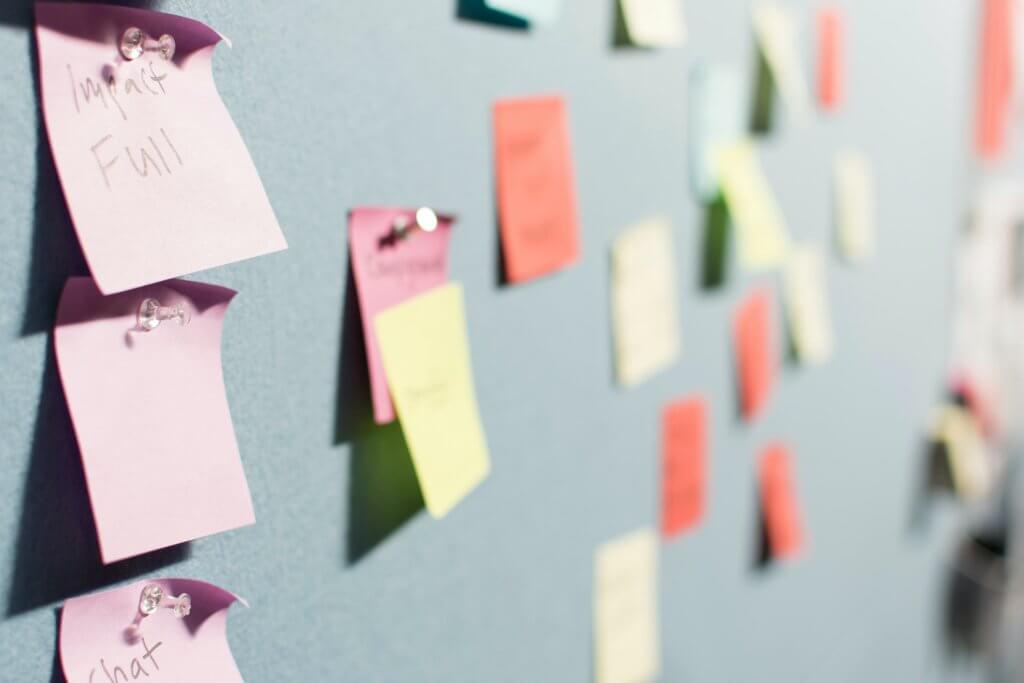
The end of year report is similar to the impact report, in that it is communicating the progress made toward the cause wrapped up and summarized. This report can be sent out at the end of the year, or in the early new year. You can follow the same touch-points that were mentioned above: need, activities, outcomes, evidence, and lessons learned.
Here are some tips for the design:
1. Be consistent with your organizations brand guidelines
2. Write your report with intention
3. Make sure the typography is accessible (Clear Print Accessibility Guide)
4. Include eye catching imagery
5. Include a contact information sections
6. Include a way to donate section
CONCLUSION
This article provided 10 pieces of direct mail with their accompanying descriptions. We also provided tools to get a preliminary start to creating these pieces, so you can add them to your annual direct mail strategy.
Want to level up your direct mail? Contact us.


